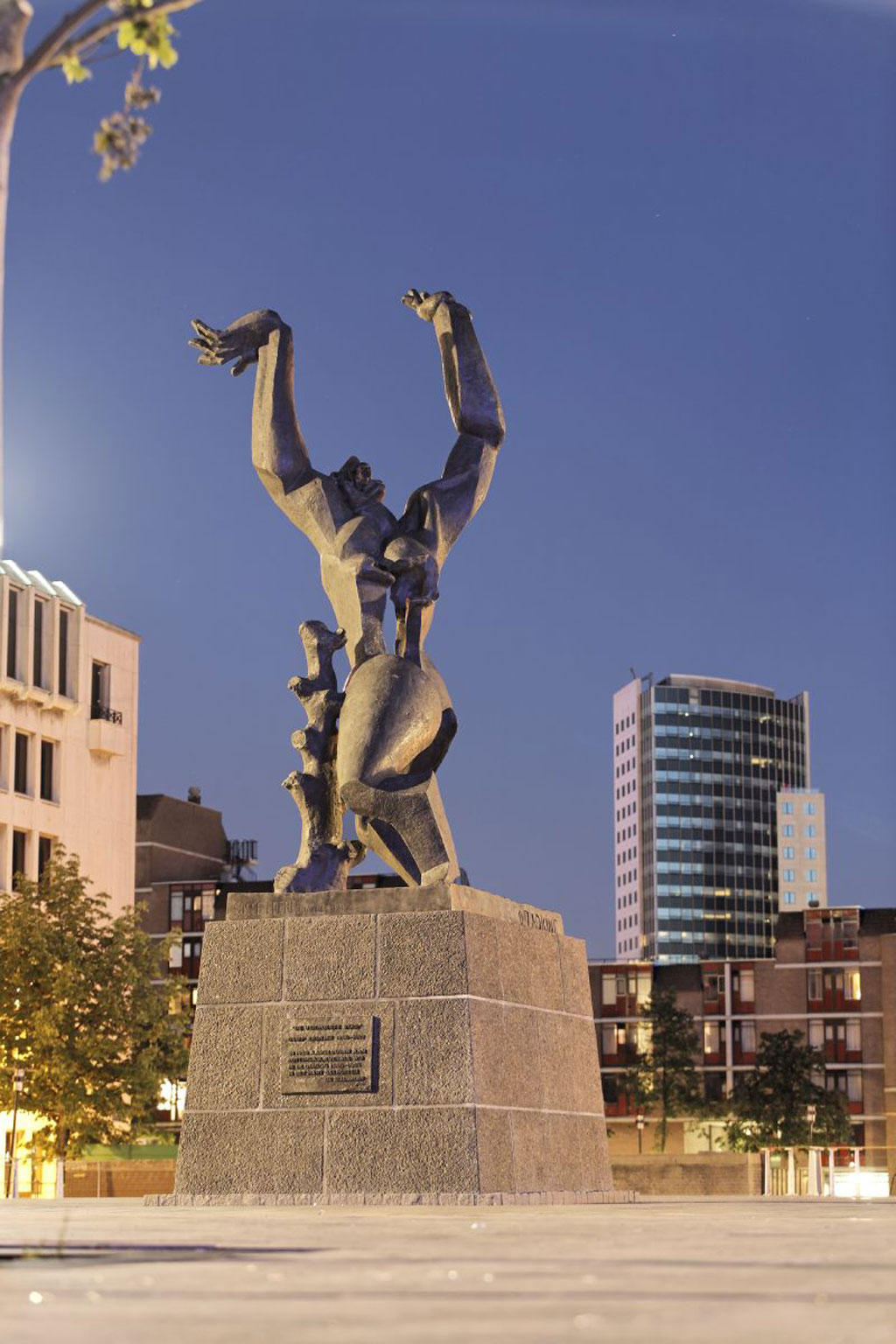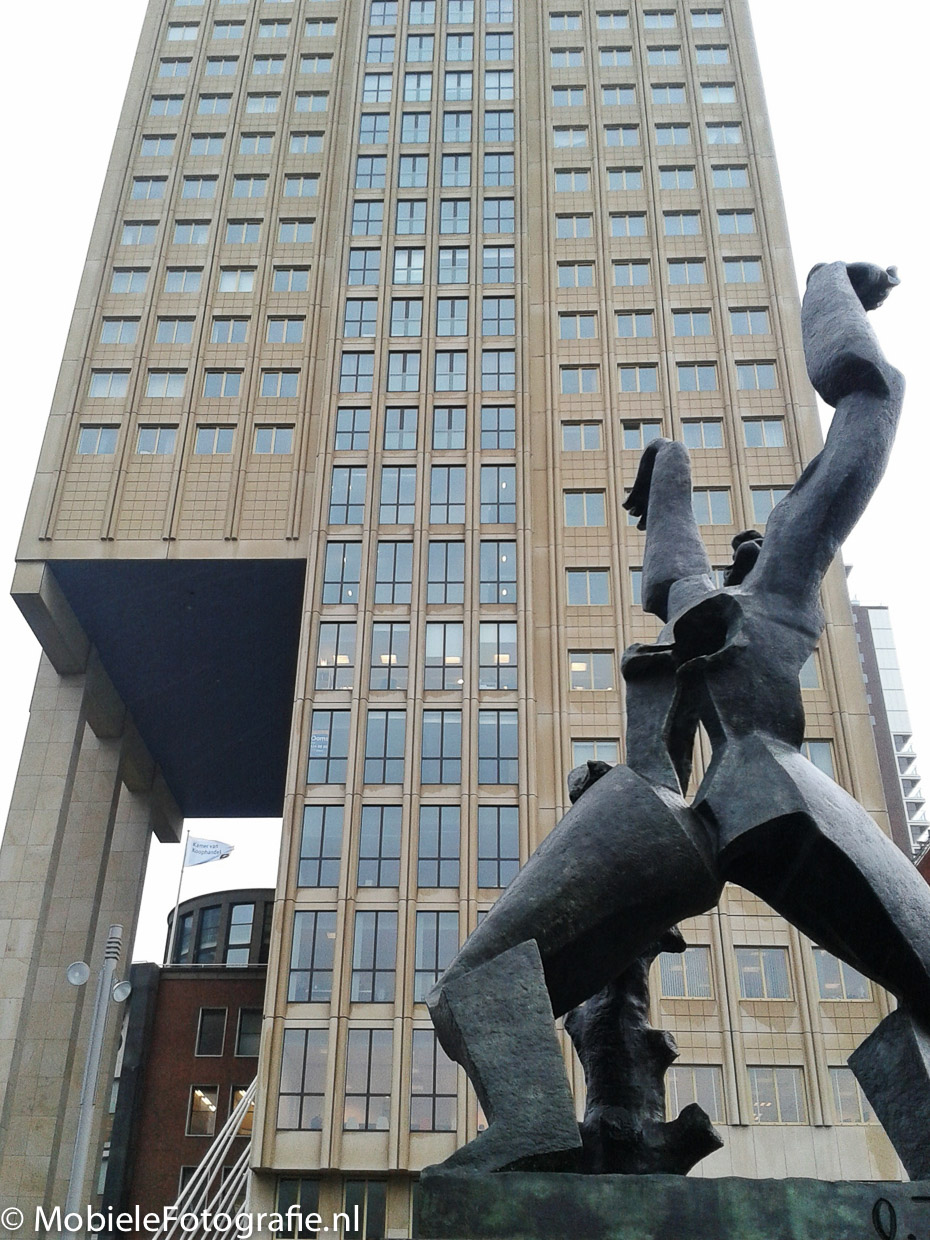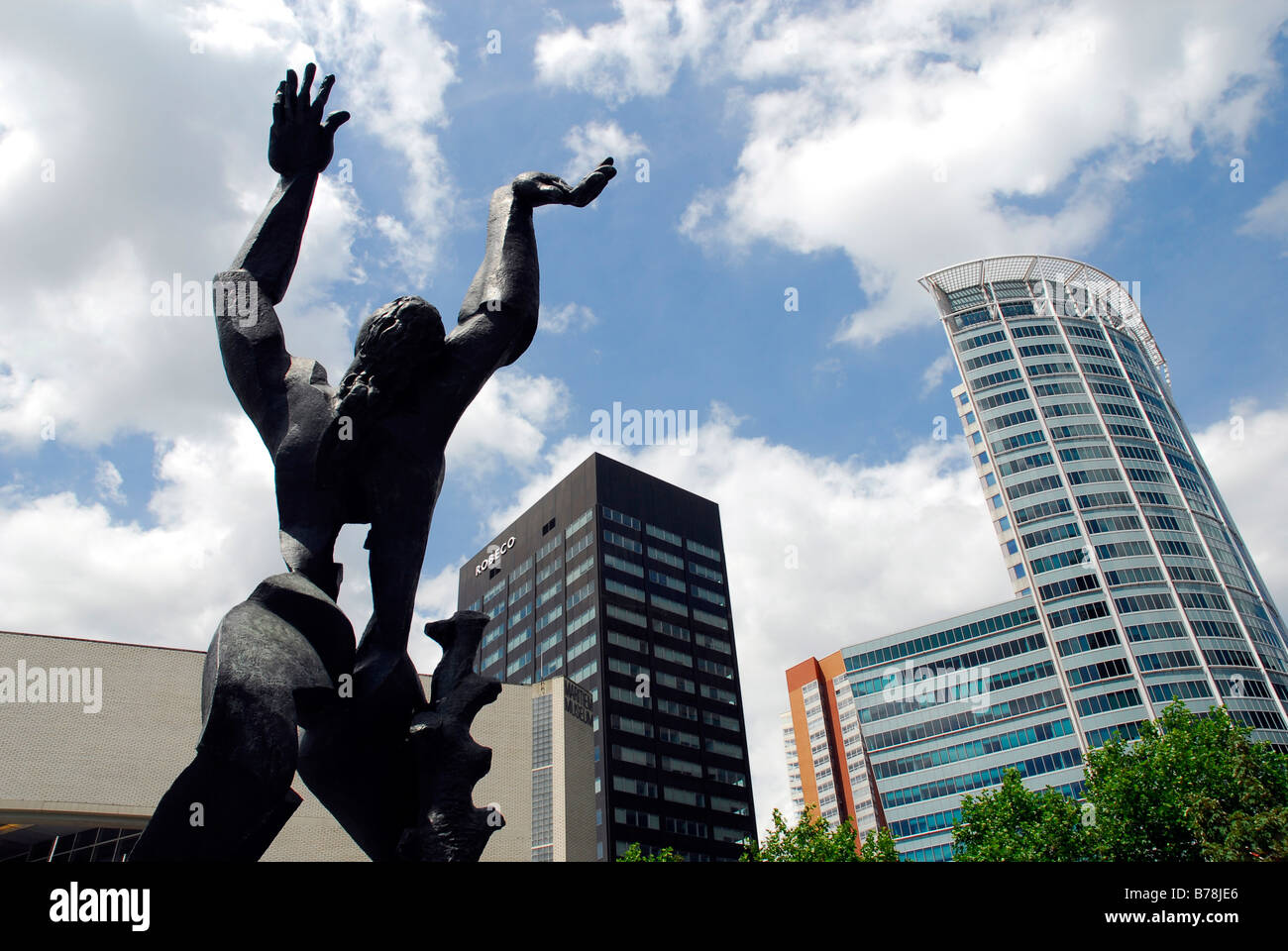
De verwoeste stad Sculpture International Rotterdam
Ossip Zadkine ( Russian: Осип Цадкин; 28 January 1888 - 25 November 1967) was a Russian-French artist of the School of Paris. [1] He is best known as a sculptor, but also produced paintings and lithographs. [2] Early years and education

Het beeld De Verwoeste Stad Arisca Photography
The De Verwoeste Stad in Rotterdam shows a desperate human with the hands towards the sky. As a symbol of the destroyed Rotterdam city center the hole in the human's chest is where the heart belongs. The tree trunk supports the human. The statue is in the Abstract Expressionism art style. The statue's purchase and anonymous donation was by.

De verwoeste stad BKOR De verwoeste stad
The "Destroyed City" (or De Verwoeste Stad in Dutch) is a 6.5m-high bronze statue created by Ossip Zadkine. Zadkine was born in Russia in 1890, and lived in Paris during the war as an artist and sculpture. He was inspired to create the sculpture after visiting the destroyed remains of Rotterdam when traveling to the city by train after the.

De verwoeste stad Beroemde beelden in Rotterdam Alles over Kunstenaars
Rotterdam: statue "De Verwoeste Stad" by O. Zadkin (1953) during restauration, May 2005. Own photo, May 13, 2005. This file is licensed under the Creative Commons Attribution 1.0 Generic license. You are free: to share - to copy, distribute and transmit the work;

De Verwoeste Stad (Zadkine) Rotterdam, Travel, Statue of liberty
De Verwoeste Stad (The Destroyed City) by Ossip Zadkine. Image: Ossip Zadkine /Wikimedia Commons/ CC3.0 The Forgotten Bombardment of 1943 Though the Netherlands and Germany are basically BFFs today, het Bombardement has been an important reason why Dutch resentment against Germans lingered for a long time after World War II.

De verwoeste stad Sculpture International Rotterdam
Verbeterde statische ondertiteling! Abonneer - Subscribe here : https://bit.ly/2NMwb6q Nederlandse ondertiteling - English spoken.De verwoeste stad is volgen.

De verwoeste stad (1953) Ossip Zadkine Rotterdam Statue, Art history, Rotterdam
The Destroyed City (Dutch: De verwoeste stad) is a bronze memorial sculpture in the Dutch city of Rotterdam. It commemorates the German bombing of Rotterdam on 14 May 1940, which destroyed the medieval centre of the city. [1] Unveiled in 1953, it was designated as a Dutch national monument ( Rijksmonument) in 2010.

De verwoeste stad BKOR De verwoeste stad
He named it De Verwoeste Stad (The Destroyed City, 1953). This bronze statue is over 6 meters tall and depicts a screaming man without a heart. He is in agony and throws his arms desperately in the sky. The missing heart illustrates Rotterdam's destroyed city center, a city without a heart. The statue is special to many people in the city.

De Verwoeste Stad (die zerstörte Stadt) von Ossip Zadkine, Plein 1940 in Rotterdam, Niederlande
De verwoeste stad is een beeld dat Ossip Zadkine maakte naar aanleiding van het bombardement op Rotterdam.Het is op 15 mei 1953 onthuld en staat op het Plein 1940, aan de Leuvehaven, naast het Maritiem Museum in Rotterdam.Het beeld is een Rijksmonument.. Naar verluidt kreeg Zadkine de inspiratie voor het beeld De verwoeste stad toen hij vanuit Parijs onderweg was naar zijn vriend, de arts.

Ossip Zadkine De verwoeste stad uit 1951, symbool voor de verwoesting in de Tweede wereldoorlog
De verwoeste stad; Usage on ru.wikipedia.org Разрушенный город (скульптура) Metadata. This file contains additional information such as Exif metadata which may have been added by the digital camera, scanner, or software program used to create or digitize it. If the file has been modified from its original state, some.

mobiele fotografie rotterdam 'De Verwoeste Stad' Zadkine Mobielefotografie.nl
Known as The Destroyed City (or De Verwoeste Stad in Dutch), this arresting artwork was created to commemorate the destruction that befell Rotterdam during World War II. On May 10, 1940, the German military, led by the Nazi party and Hitler, invaded the Netherlands in an attempt to occupy the country.

"De Verwoeste Stad" sculpture by Zadkine (18901967) in Rotterdam, The Netherlands Stock Photo
Nowadays, the Maritime Museum and Plein 1940 with statue 'de Verwoeste Stad' (The Destroyed City) by Ossip Zadkine are located here. 18. Blaak Bank Buildings In the early years of the reconstruction,it seemed that only banks were built (Among others: Coolsingel, Schiekade, Botersloot). Just on Blaak, three big banks were raised from the ground.

ArtSite In ons geheugen gegrift De Verwoeste Stad, Ossip Zadkine
Delftshaven is a remarkable piece of Rotterdam, a bit to the west of the city center. In the 14th century, Delftshaven emerged when a canal was dug from Delft to the river Maas. It became the harbor of Delft, hence the name. But Delft is almost 15 kilometers away. The harbor grew as a wealthy, more or less independent little city.

Standbeeld in Rotterdam van de verwoeste stad in de oorlog! Standbeeld, Monumenten, Stad
Het kunstwerk. De verwoeste stad is volgens Ossip Zadkine ontstaan toen hij in 1946 met de trein het door oorlogsgeweld gehavende Rotterdam binnenreed. Het is in zijn eigen woorden: 'Een kreet van afschuw tegen de onmenselijke wreedheid van deze beulsdaad' [1]. Het beeld stelt een ontredderde figuur voor, hoofd en armen zijn ten hemel geheven.

De verwoeste stad Museum Rotterdam
De verwoeste stad is een beeld dat Ossip Zadkine maakte naar aanleiding van het bombardement op Rotterdam. Het is op 15 mei 1953 onthuld en staat op het Plein 1940, aan de Leuvehaven in Rotterdam, naast het Maritiem Museum. Het bronzen beeld stelt een menselijk figuur voor zonder hart, als symbool voor het hart van Rotterdam dat werd verwoest.

De Verwoeste Stad, the devastated city, Monument of Zadkine, Churchillplein, Rotterdam, South
English: De Verwoeste Stad is a bronze sculpture made in 1953 by Ossip Zadkine for the Dutch City of Rotterdam, in rememberance of the bombing and destruction of the old city-center in May 1940 by the German "Luftwaffe", in the first days of the Dutch occupation (ending in May 1945) by the Germans during World War II.